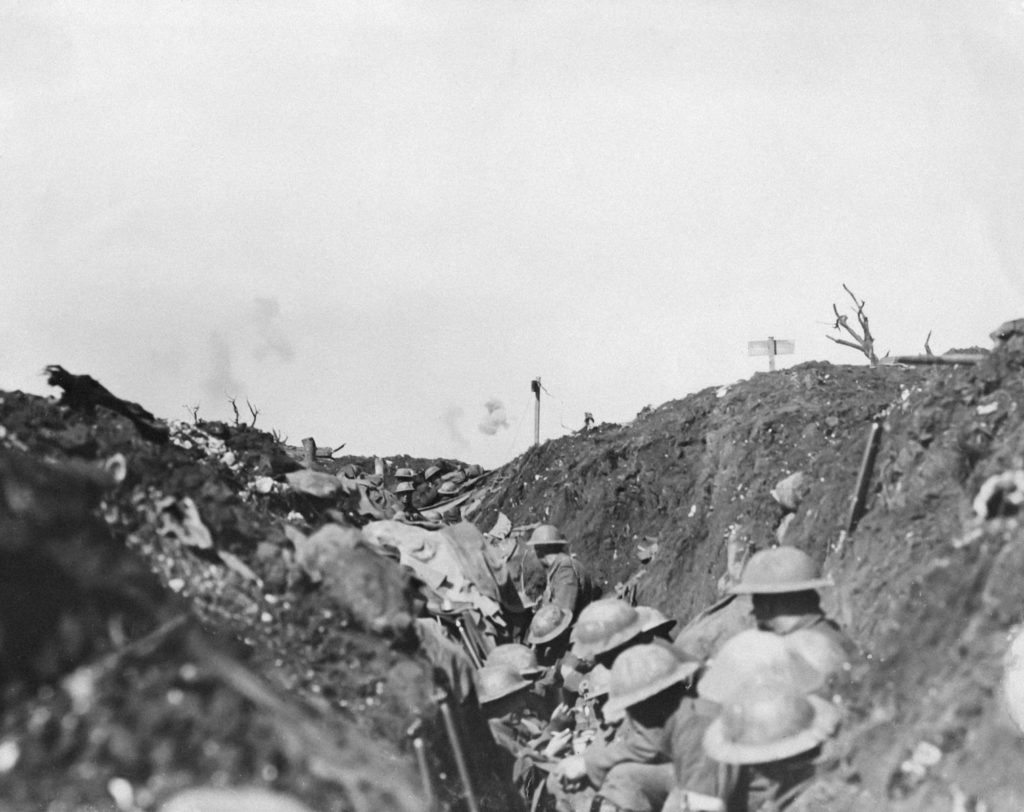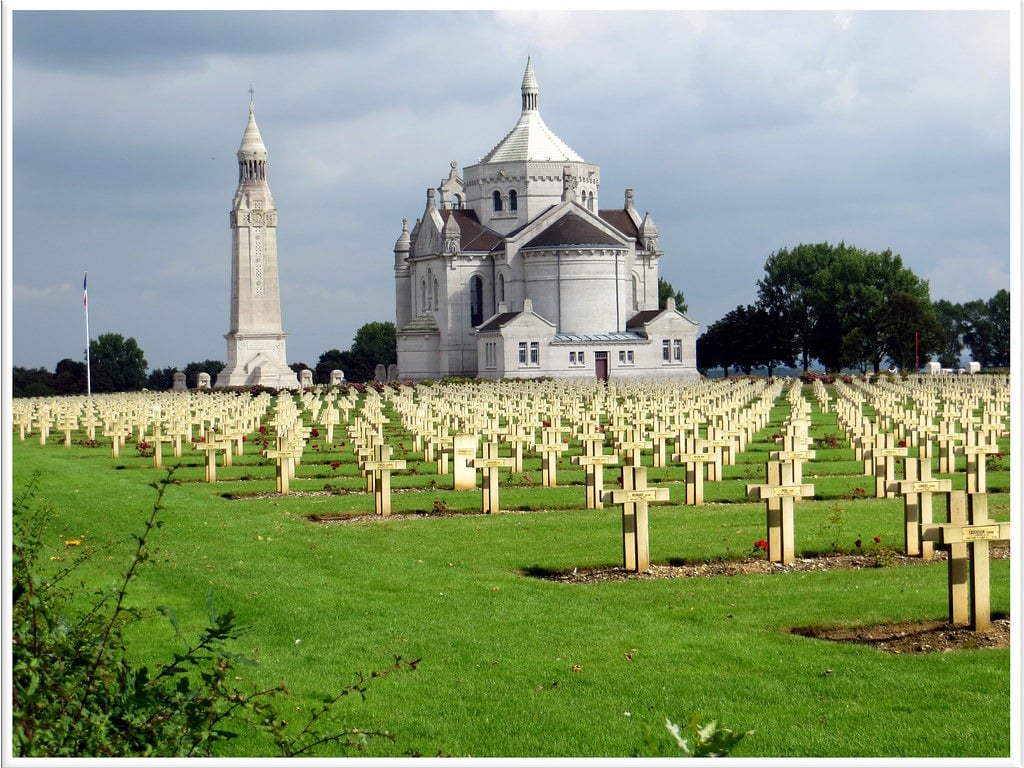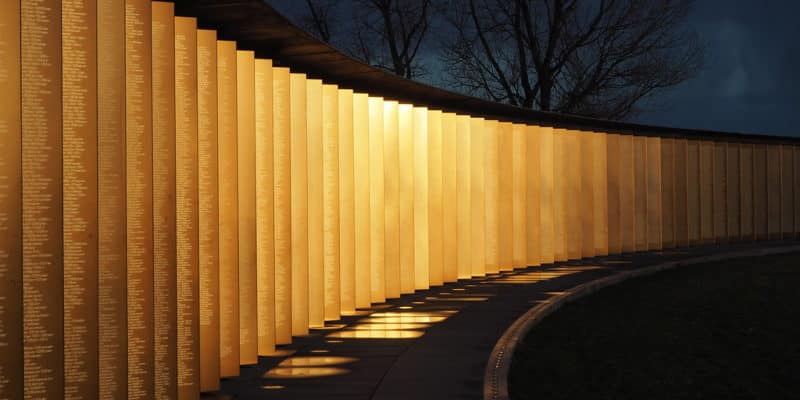Northern France, rich in history and stories, bears the scars of the Great War. One of the most striking monuments to this period is the Anneau de la Mémoire, also known as the International Memorial of Notre-Dame-de-Lorette. This impressive structure, inaugurated on November 11, 2014, is a memorial to the fallen of the First World War.
Like the nearby Vimy Memorial, it is a powerful symbol of peace and remembrance.
The architecture of the memorial
The Anneau de la Mémoire is the brainchild of French architect Philippe Prost. His design is both powerful and pure, making this memorial a true work of art as well as a site of commemoration. The elliptical shape of the monument is no accident: it is heavy with meaning and full of symbolism. The memorial is made up of 500 steel plates, each around 3 metres high. The plates are arranged in three concentric rings, forming an ellipse with a circumference of 345 metres. The names of almost 600,000 soldiers who died are inscribed on these plates. The material used for the plaques develops a patina over time.
This reinforces the link between the monument and history, creating a parallel with the lives marked and transformed by war. The ellipse represents a form without beginning or end, symbolizing the continuity and circularity of history. It is also the sign of an indestructible unity, highlighting our duty to remember and the importance of never forgetting the horrors of war. The monument is not only a reminder of the lives lost, but also an invitation to learn from our past and work for peace. The choice of orientation for the Ring is also significant.
Looking towards the horizon, the memorial seems to be looking towards the future, a powerful representation of hope and resilience. This arrangement symbolizes the universality of memory, evoking the fact that the history of the Great War is an integral part of the world’s heritage.
Names on the Ring
The truly universal character of the Anneau de la Mémoire lies in the way the soldiers’ names are presented. Indeed, the monument is engraved with almost 600,000 names of soldiers who fell on Nord-Pas-de-Calais soil between 1914 and 1918. But what sets this monument apart from many other war memorials is the way these names are presented: they are inscribed in alphabetical order, regardless of nationality or military rank.
This deliberate choice breaks with traditional commemorative conventions, where names are often grouped by nationality, military unit or rank. By choosing to organize the names alphabetically, Philippe Prost and the memorial’s organizers wanted to convey a strong message: despite the national or hierarchical divisions that can exist in wartime, each person is first and foremost a human being. This approach puts humanity before conflict, and conveys a powerful lesson in equality and fraternity. On the Anneau de la Mémoire, you’ll find the names of soldiers of extremely diverse nationalities.
French, Germans, British, Canadians, Australians, Indians and many other nationalities are represented.
It’s a poignant illustration of the scope and global impact of the First World War. Moreover, this cosmopolitan grouping serves as a reminder that the war was not a series of isolated battles fought by separate nations, but a human tragedy on a global scale.

Soldiers in the trenches during the First World War
Background
The site of the Anneau de la Mémoire, the hill of Notre-Dame-de-Lorette near the towns of Lens and Arras, is steeped in heavy, moving history. During the First World War, this area was the scene of violent confrontations, making it a significant place of remembrance. The memorial’s location is therefore no accident, but a conscious choice to pay tribute to those who lost their lives in this war-torn region.
The hill of Notre-Dame-de-Lorette was the center of three major battles in 1915, known as the Battles of Artois.
During these confrontations, French forces attempted to break through the German lines, resulting in immense losses on both sides. It is here, on this battle-scarred ground, that the largest French military cemetery of the First World War now rests. The Notre-Dame-de-Lorette cemetery contains the graves of almost 40,000 soldiers, more than half of whom are unknown. The ossuary, a monument containing the remains of those who could not be identified, bears witness to the immense human cost of the war. It is accompanied by a basilica and a lighthouse, the Lantern of the Dead, whose light symbolizes eternal remembrance.

Notre-Dame-de-Lorette cemetery
Geographical location
D.A.
